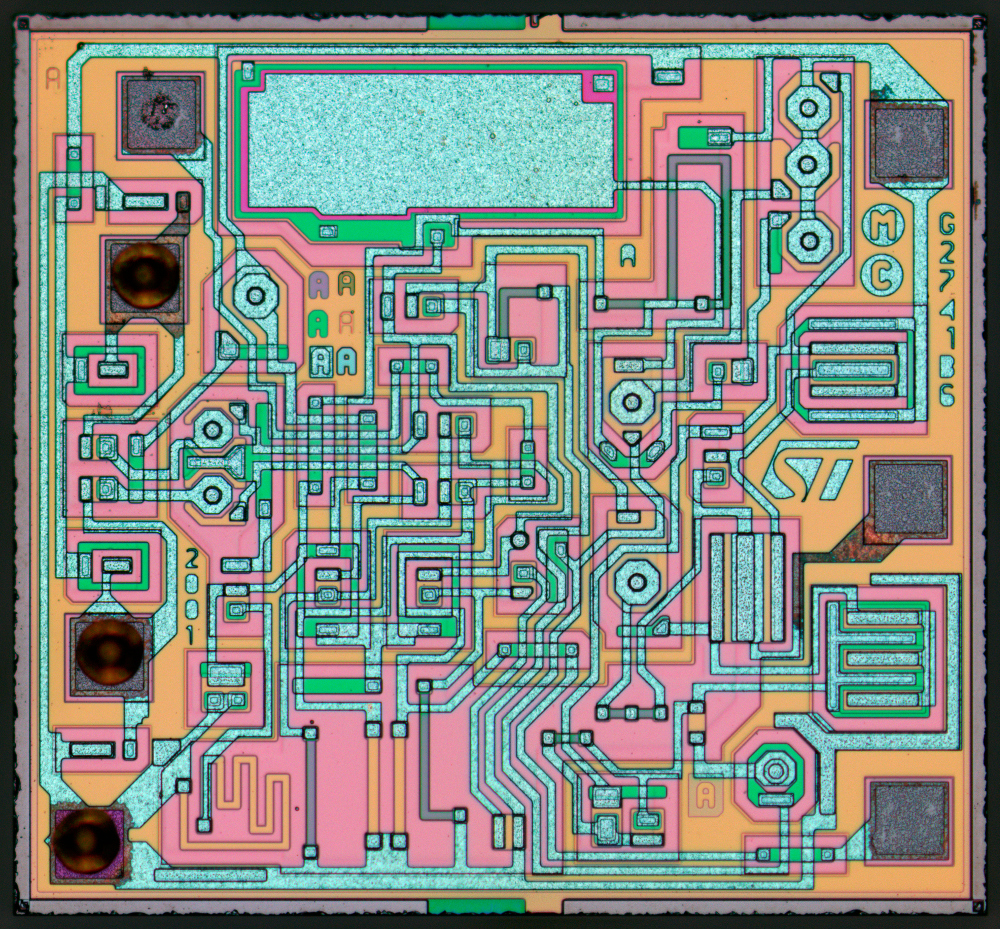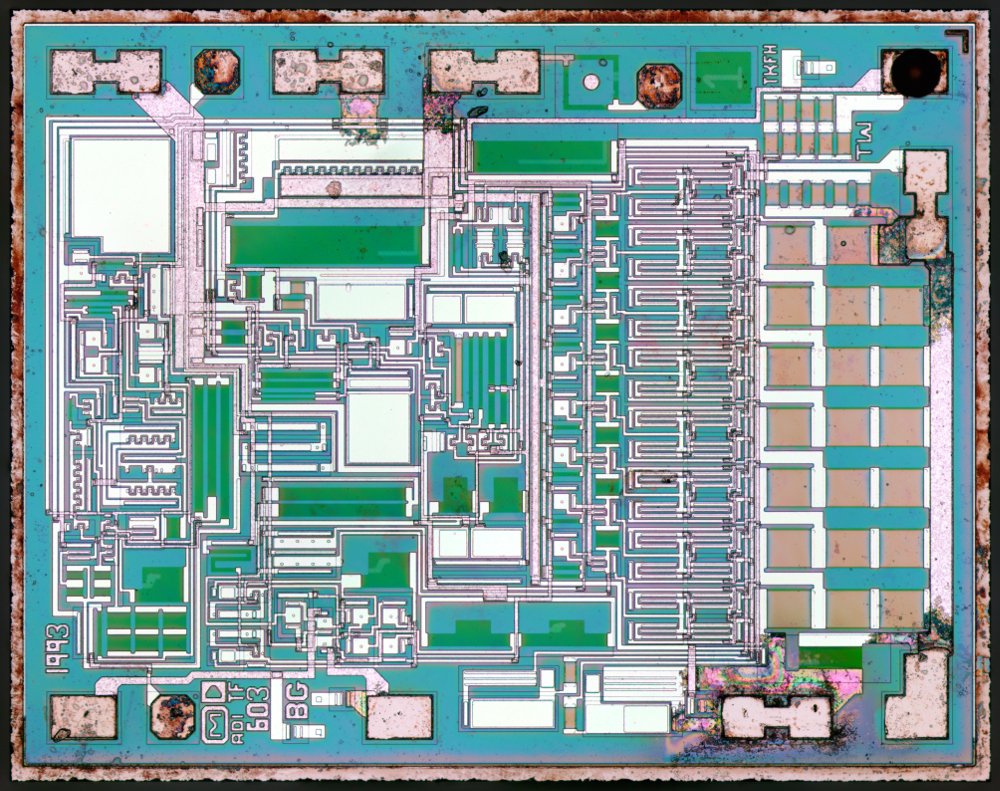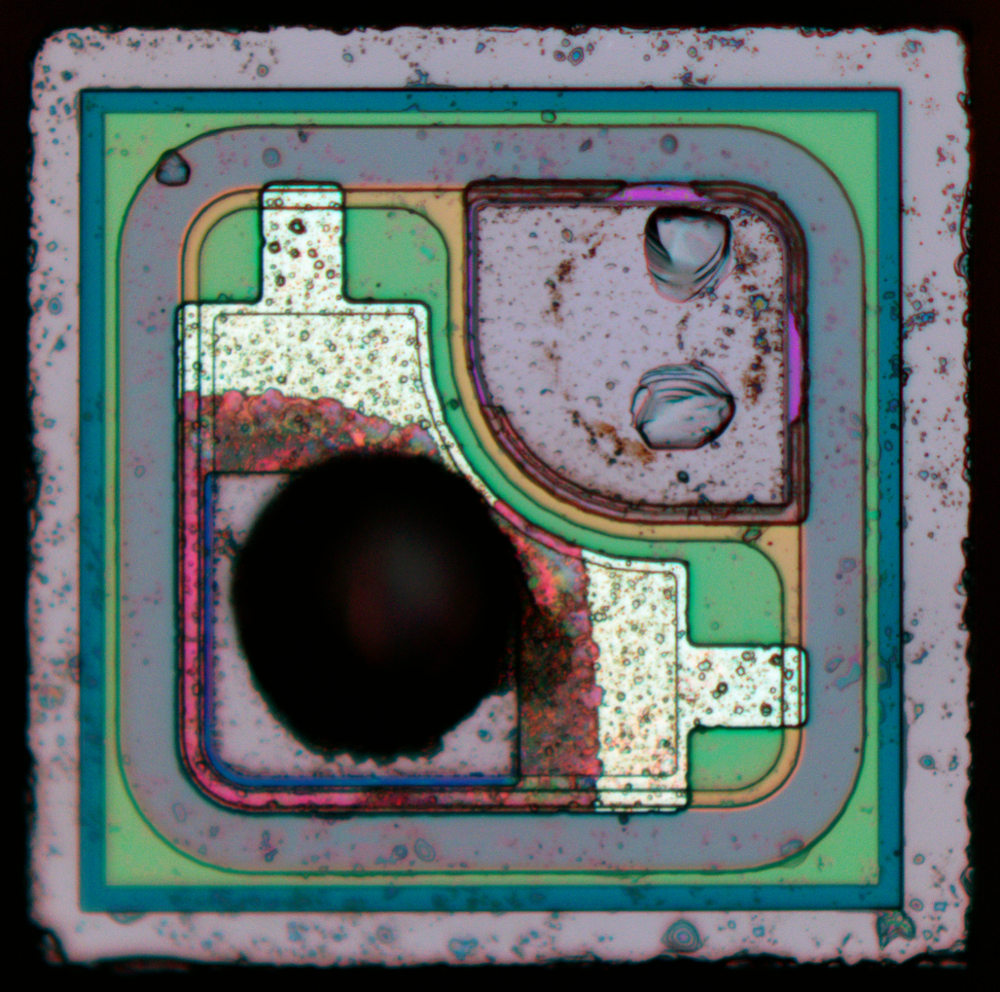December 21, 2015
Dallas Semiconductor DS1000Z : weekend die-shot
Dallas Semiconductor DS1000Z - 5 tap delay line.Die size 2074x1768 µm.
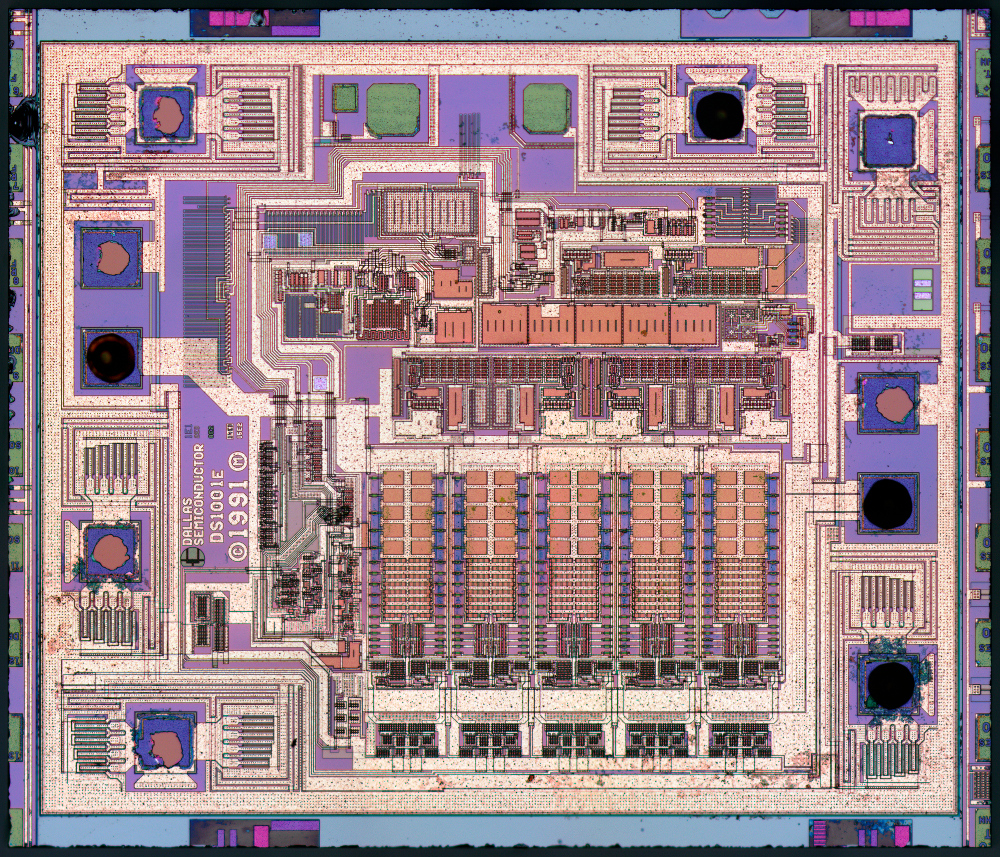
November 10, 2015
Infineon BFR740 - 42GHz BJT : weekend die-shot
Infineon BFR740L3RH - bipolar SiGe RF transistor with transition frequency of 42Ghz in a very small leadless package (TSLP-3-9 - 0.6×1×0.31mm).Die size 305x265 µm.
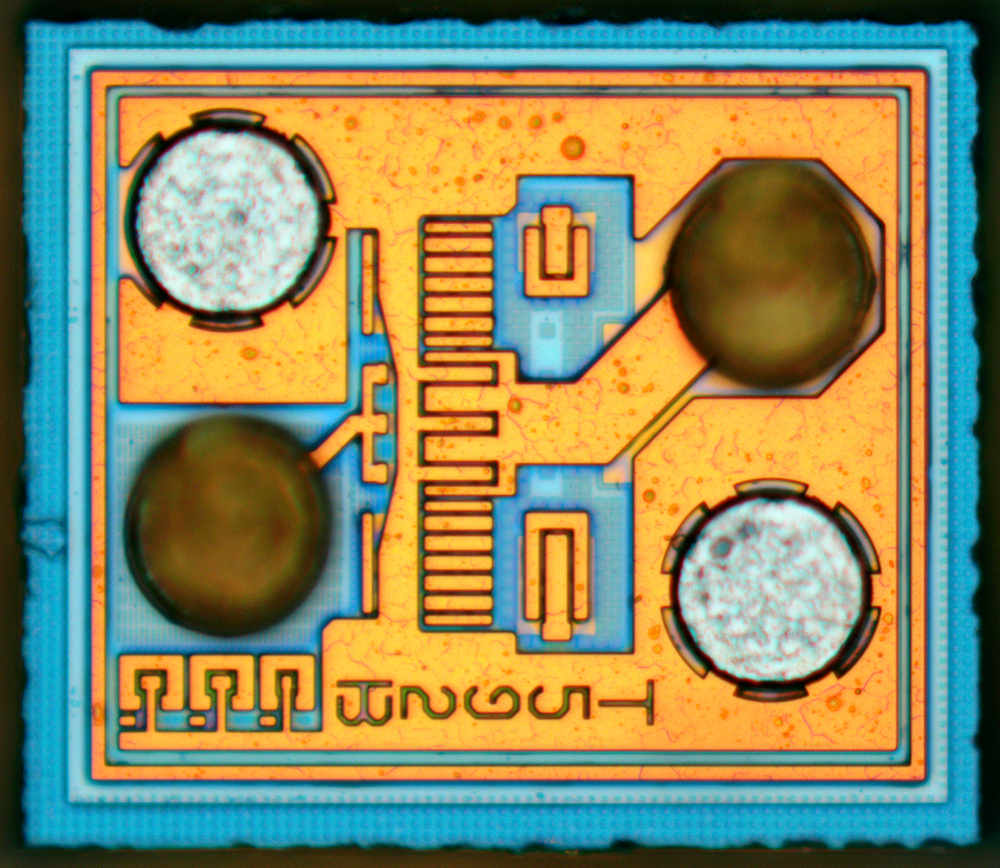
Read more →
October 26, 2015
October 26, 2015
CHANGJIANG MMBT2222A - npn BJT transistor : weekend die-shot
Unlike OnSemi MMBT2222A CHANGJIANG MMBT2222A has both smaller die size and simpler layout (BC847-like) - which should cause significantly lower hFE on high collector currents.Die size 234x234 µm.
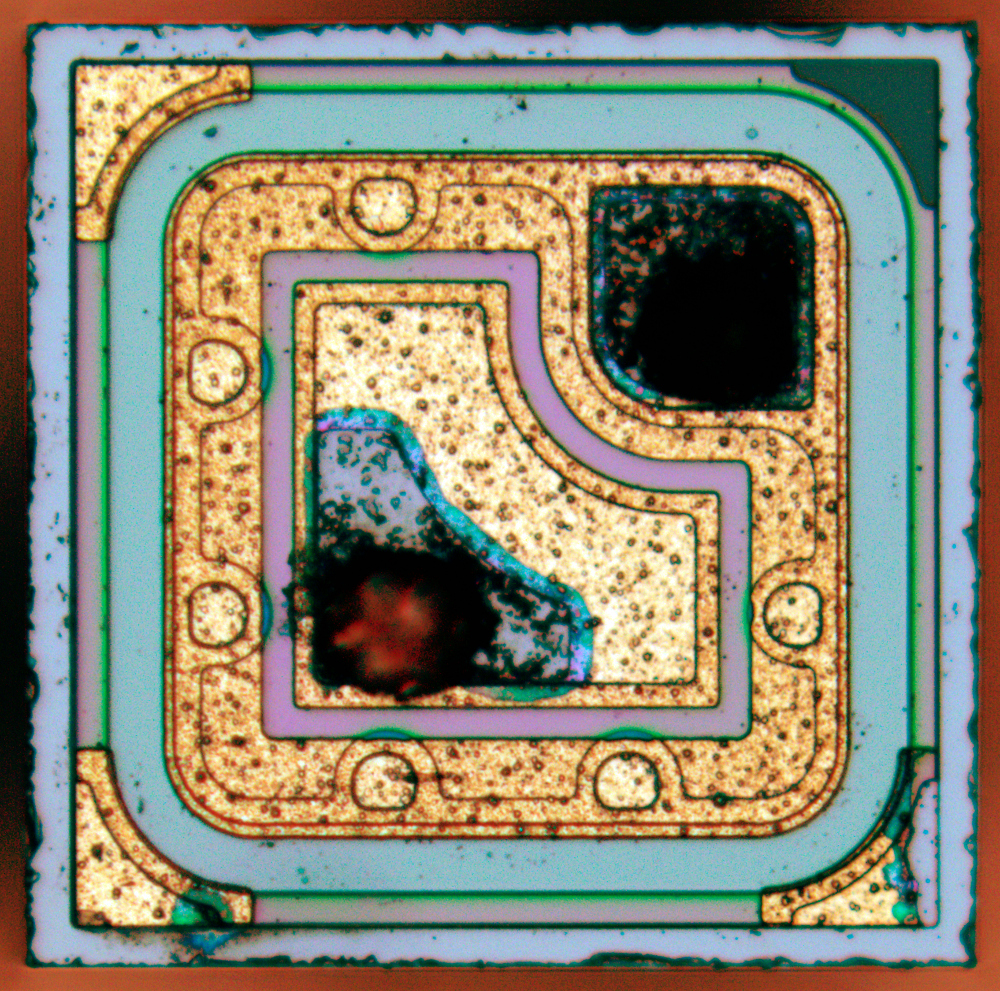
October 19, 2015
Linear LT1021-5 ±0.05% precision reference : weekend die-shot
Expected heavy duty digital correction? Nope. Just 15 fuses and buried Zener - truly a work of art.Die size 2354x1364 µm.
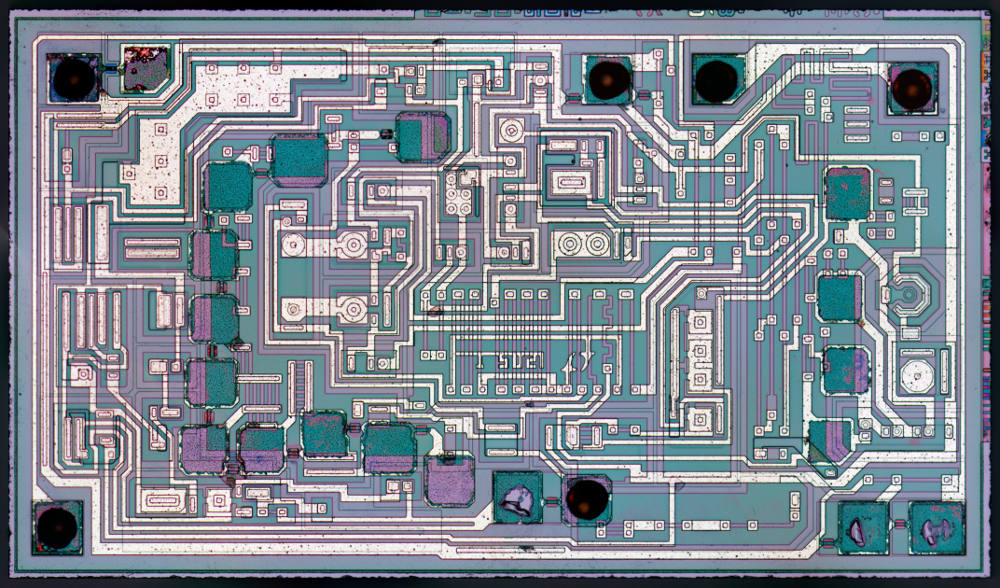
October 19, 2015
October 11, 2015
ST UA741 - the opamp : weekend die-shot
µA741 was the first "usable", widespread solid state opamp, mainly due to integrated capacitor for frequency correction (which we now take for granted in general-purpose opamps). This chip was reimplemented numerous times since 1968, like this ST UA741 in 2001. You can also take a look at historic schematic of µA741 here.Die size 1073x993 µm.
